Office Design Psychology: How Layout Affects Productivity and Wellbeing
You’ve probably walked into an office and immediately felt energised or drained, focused or scattered, comfortable or on edge. That reaction isn’t a coincidence; it’s psychology in action. Your office design is silently influencing your team’s productivity, wellbeing, and ultimately your bottom line every single day. A space that makes people happy and meets their needs is a space they want to be in and work in. Yet many business owners approach office fitouts thinking purely about aesthetics or cost, missing the psychological goldmine sitting right in front of them.
With workplace stress affecting Australian workers and mental health triggering reduced productivity globally, understanding office design psychology isn’t just nice to have; it’s business-critical. Let’s explore why some offices inspire greatness while others seem to drain the life out of everyone who enters them.
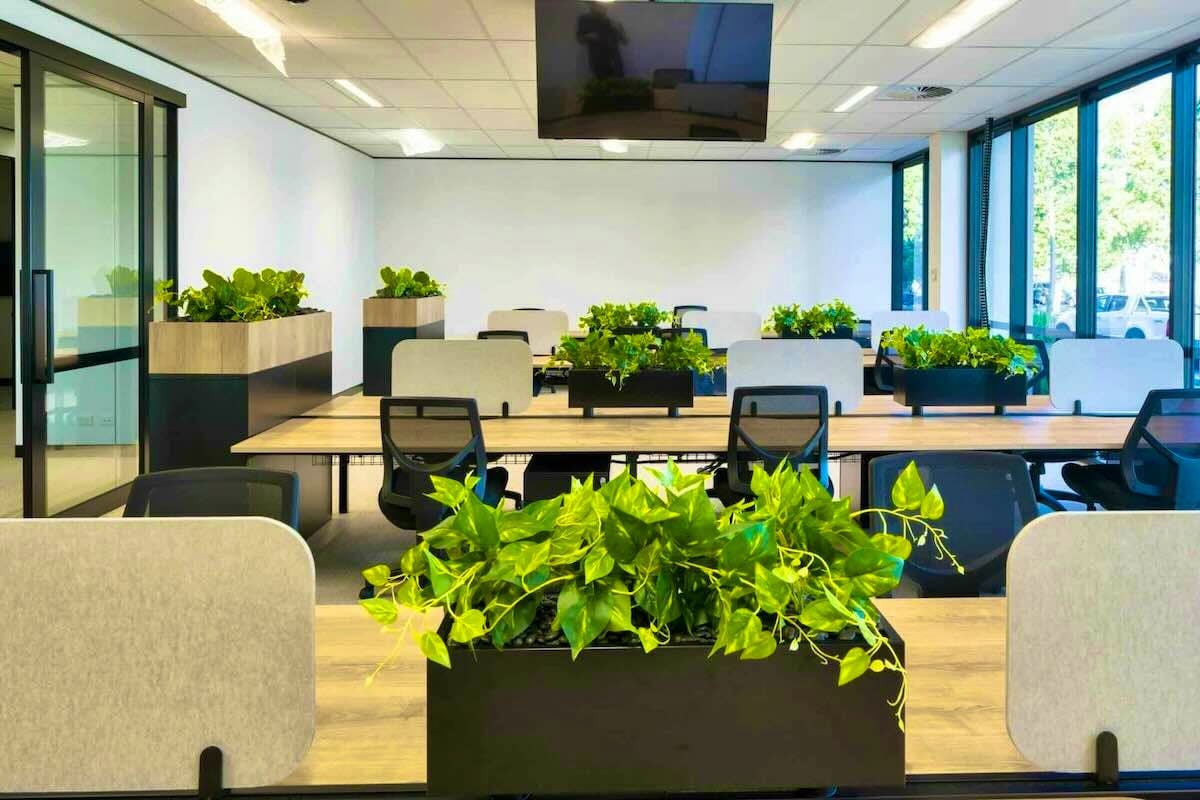
Beyond Pretty Walls – How Design Elements Trigger Psychological Responses
When you walk into nature, something shifts in your mind almost immediately. Your breathing deepens, your shoulders relax, and your thoughts become clearer. Smart office design taps into this same psychological response through biophilic design.
Natural light has a profound influence on wellbeing and productivity. It enhances mood, reduces eye strain, and positively impacts circadian rhythms, leading to improved sleep quality. But biophilic design goes beyond lighting; it integrates elements of nature through indoor plants, green walls, natural materials like timber and stone, and water features. These elements alleviate stress, boost creativity, and enhance cognitive function.
Colour psychology plays an equally powerful role in shaping your team’s mental state. Blue tones help people stay focused and calm, making them ideal for concentration areas. Green reduces anxiety and stress while promoting creativity, which is perfect for brainstorming spaces. Warmer colours like yellow can energise collaborative areas, though they should be used sparingly to avoid overstimulation.
The mistake many businesses make is treating colour as purely decorative. Instead, think of your colour palette as a psychological tool that can either support or undermine the work happening in each space.
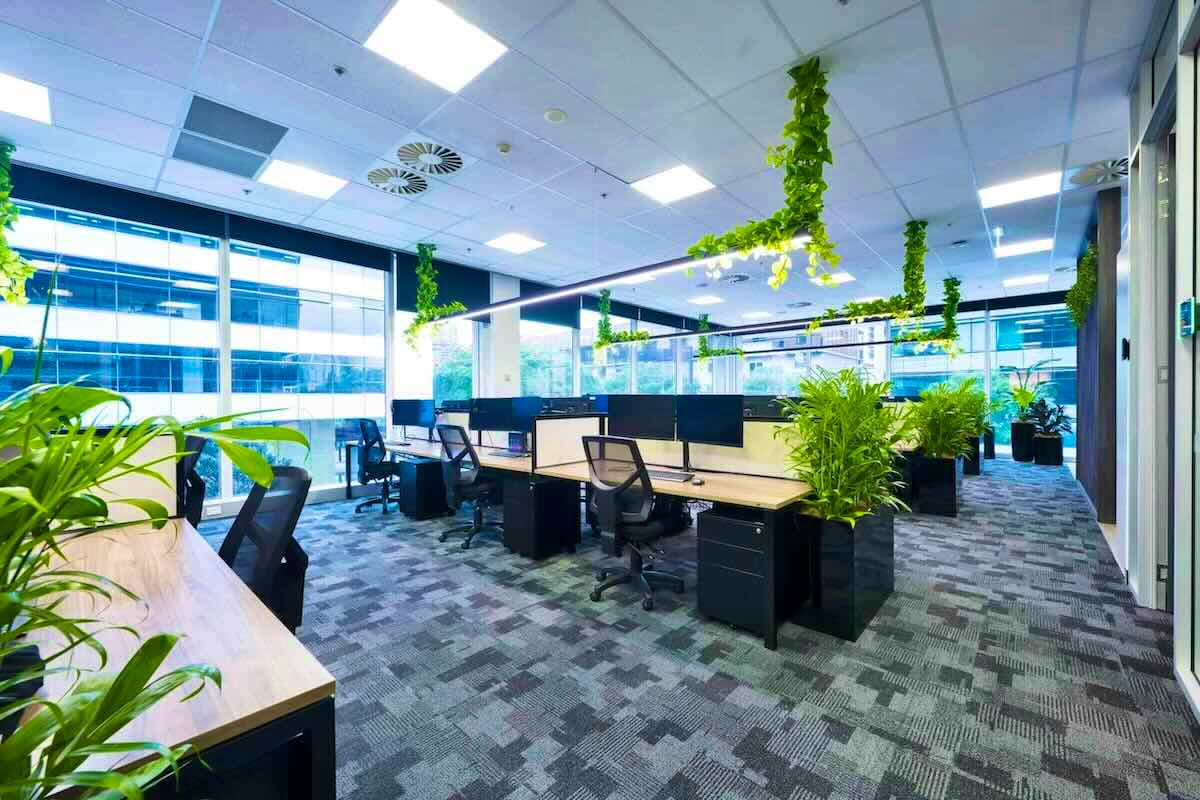
Organisation and Accessible Storage – A Tidy Office Equals a Calm Mind
Most people do not enjoy working in or near mess. A well-organised and clean office environment directly supports staff productivity, focus, and efficiency. When everything has a designated place, thanks to smart storage solutions and functional fitouts, employees spend less time searching for tools, documents, or supplies and more time doing meaningful work. Clutter-free workspaces also reduce stress, encourage clear thinking, and create a professional atmosphere that boosts morale. Ultimately, organisation isn’t just about tidiness, it’s about creating a streamlined space that supports faster workflows, better habits, and a more motivated team.
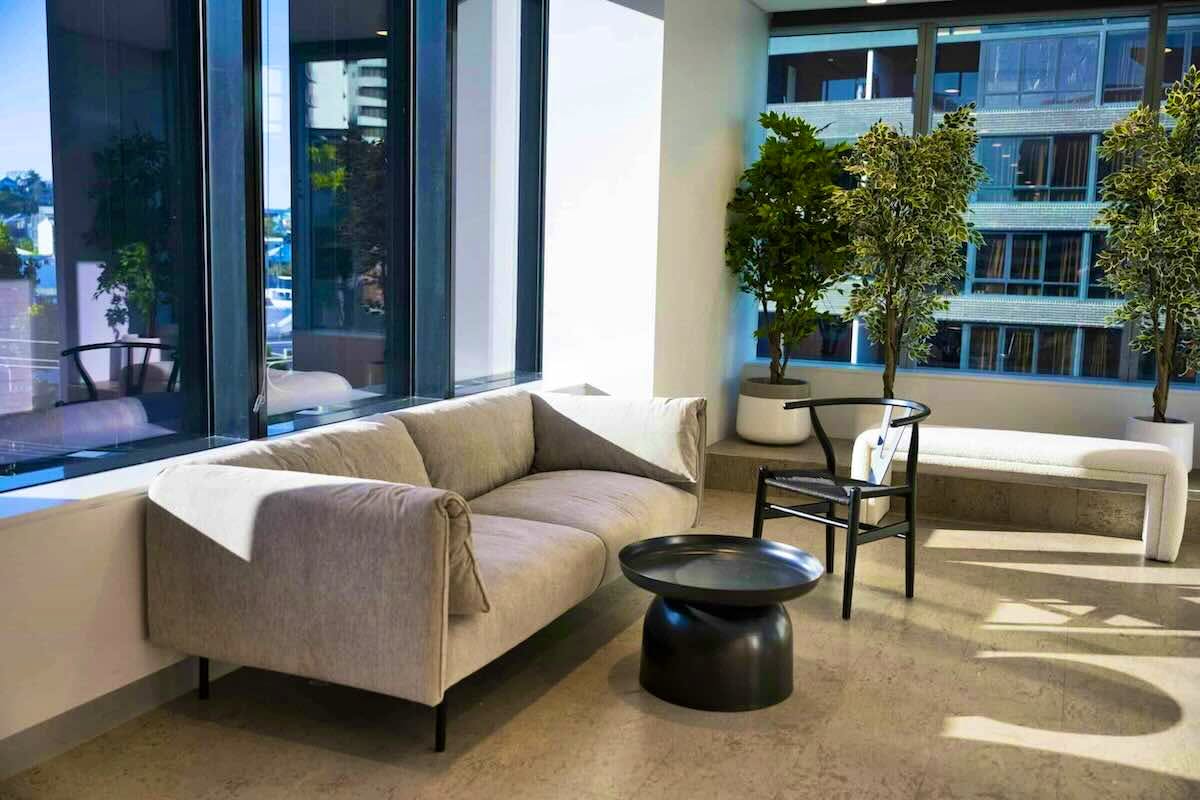
The Comfort Equation – Physical Design’s Impact on Mental Performance
Physical discomfort creates a constant mental drain on your team, even when they’re not consciously aware of it. When someone’s struggling with an uncomfortable chair or distracting noise, their brain uses precious cognitive resources just to cope with these irritations, resources that should be focused on their actual work.
Ergonomic design creates psychological comfort that frees up mental capacity. When individuals feel physically comfortable and supported, it enhances their confidence and job satisfaction, leading to higher motivation and engagement. Think of ergonomics as removing psychological friction from the work experience.
Acoustics play a particularly crucial role in mental performance that many fitouts overlook. Poor acoustics trigger stress responses and make concentration nearly impossible. It’s about creating the right acoustic environment for different types of work; some people need complete quiet to think deeply, while others work better with a gentle buzz of activity.
The psychology behind acoustic comfort is fascinating. When people can’t control the sound in their environment, they feel powerless and stressed. Strategic use of sound-absorbing materials, acoustic panels, and white noise systems can give employees back that sense of control.
Lighting directly affects mood and energy levels. When natural light isn’t available, investing in quality LED lighting that mimics natural light patterns makes a dramatic difference to your team’s mental state.
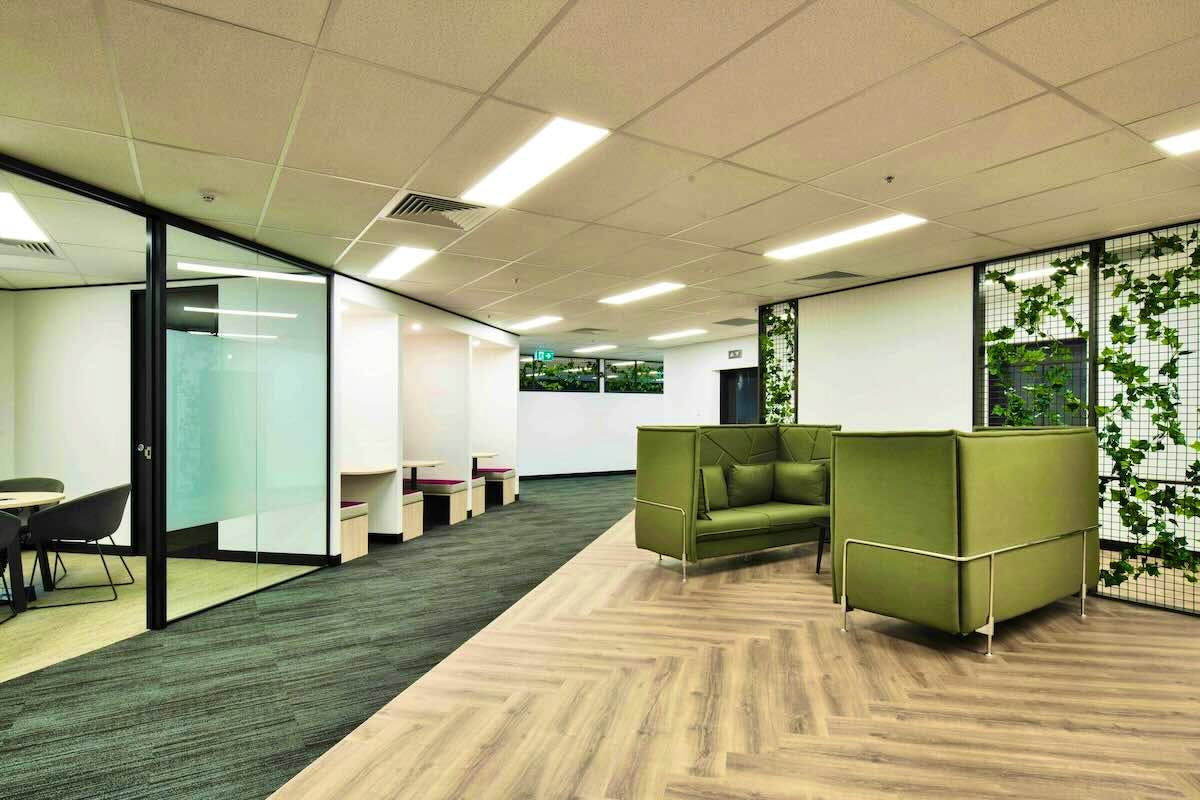
Creating Choice – How Flexible Spaces Support Different Work Minds
One of the most psychologically damaging aspects of traditional office design is assuming everyone works the same way. Your team members have vastly different psychological needs; some thrive in collaborative, energetic spaces, while others need quiet, private areas to do their best thinking.
Activity-based working acknowledges this diversity by creating different zones for different types of work. Rather than assigning fixed desks, you’re empowering people to choose environments that best support their tasks. This sense of choice and control has profound psychological benefits, leaving people feeling more autonomous and engaged.
The psychology behind flexible workspaces goes deeper than variety. Moving between different settings throughout the day helps prevent mental fatigue. A change of scenery literally helps reset the brain and spark new ideas.
Consider creating distinct psychological zones: quiet retreat areas for deep thinking, collaborative spaces that encourage interaction, social areas that help people recharge, and focused work zones that minimise distractions. Each area should feel different and serve a different psychological purpose.
Modern employees also crave spaces that reflect their values and company culture. Personalisation through customised furniture, branded colour schemes, and unique artwork creates emotional connections to the workspace, enhancing overall engagement and productivity.
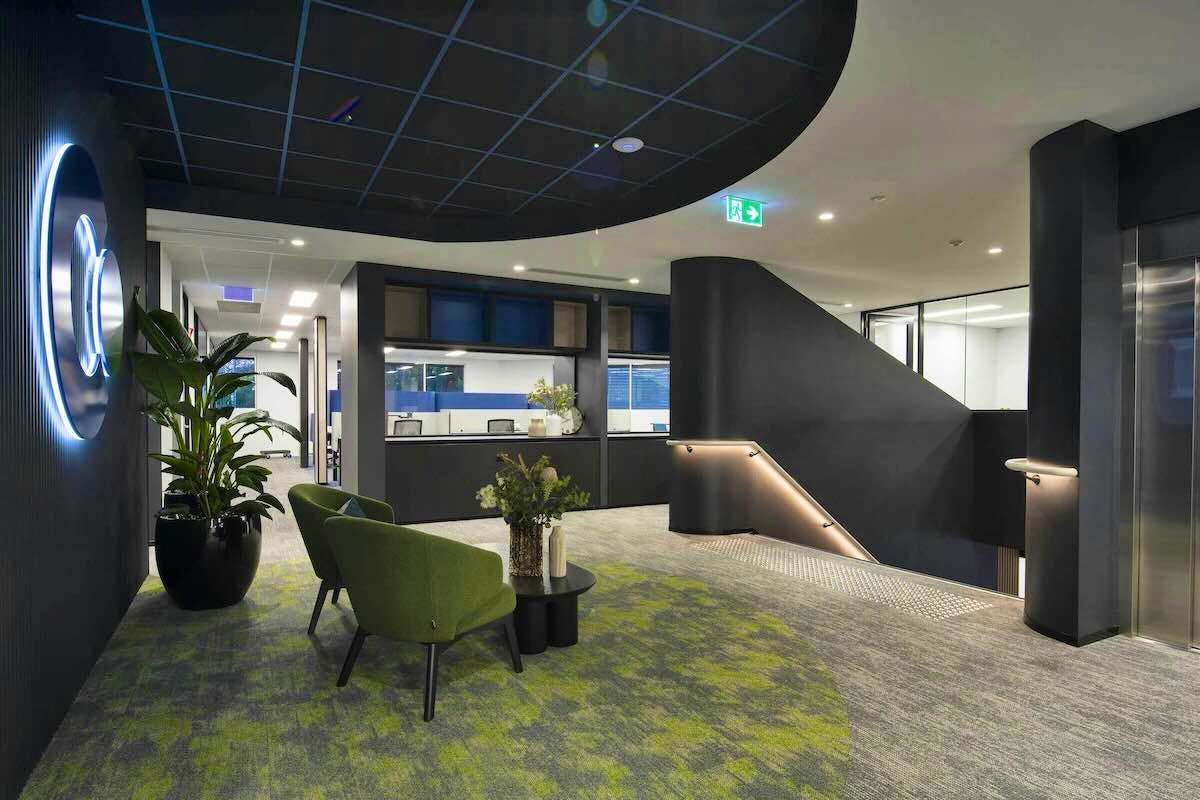
Bringing Psychology Into Your Next Fitout
The psychology of office design isn’t about creating a pretty space, it’s about crafting an environment that brings out the best in your people. Every design decision you make either supports or undermines your team’s psychological wellbeing and performance.
Ready to transform your office into a space that truly works for your team? Urban Group specialises in creating psychologically intelligent office fitouts that boost both wellbeing and performance. Our team understands the intricate relationship between design and human psychology, ensuring your next office fitout becomes a strategic advantage for your business. Contact Urban Group today to discover how the right design can unlock your team’s full potential.
